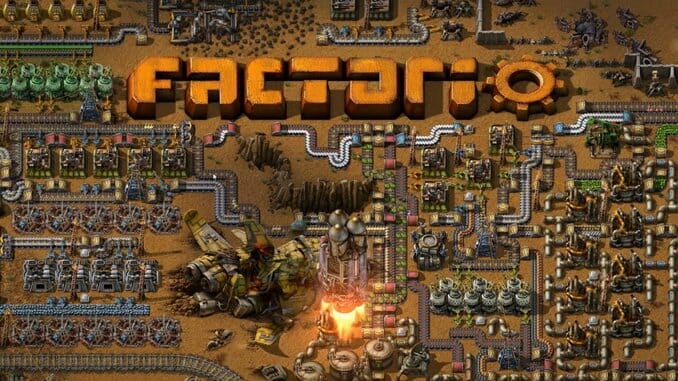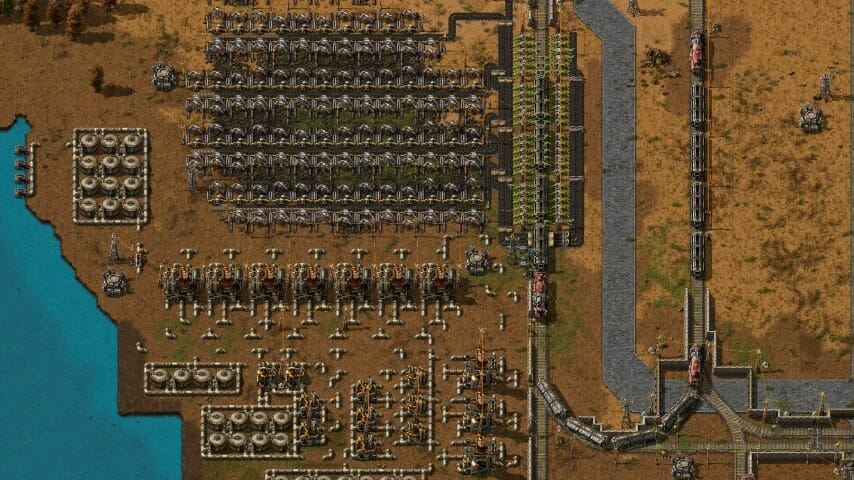
When Early Access first came around on Steam, it was envisioned as a way for small developers to fund their game’s development in real time and solicit feedback from players during the course of production. Many games have entered Early Access, only to slowly fizzle out over time and never reach their true potential. Developers lose interest, fail to listen to player feedback or simply ghost the player base, leaving behind a mess of half-baked gameplay and empty ambitions.
Factorio is not one of those games.
Factorio is a construction and management simulator by Wube Software LTD. which officially released on Aug. 14, but has been around on Steam since February of 2016. Since then, it has progressed from a rudimentary prototype into a genre-defining experience. The game begins with the player having crash landed on an alien planet. Using meager supplies from your ship and the environment, the player is tasked with creating a factory capable of producing a rocket from the ground up.
Patches of iron, copper, stone and coal dot the landscape, each with a set amount of resources in them. You start with a single coal-powered mining rig and stone oven. Using these tools, you start to extract iron ore, coal, stone, and copper to make more mining rigs and stone ovens. Before long, you’ll be crafting rudimentary conveyor belts and robotic arm inserters to automate the extraction and smelting of ores, and eventually build up enough refined material to set up a basic power grid.
After setting up an embryonic power grid, the game then becomes about using the materials you produce to create the ability to produce more materials. The crux of this is the production of science packs which allow you to unlock new materials and items to use. With each addition to your factory, the hunger of the factory for resources and power also grows. The result is a seemingly endless cycle of adding a wing to your factory, straining your resources, having to extract more resources, then returning to step one.
Oh, and also aliens constantly attack you.
With each addition to your factory, the amount of pollution it creates also grows and forms a constant cloud around it. Bases of enemy bugs respond to this cloud with aggression, forming raiding groups with nearby bases to the source of the pollution. The game then takes on the dual role of a factory simulator and tower defense game.
Eventually, if the player has successfully balanced their resource management and defensive capabilities they produce a rocket, fling it into the high heavens, and win the game.

While on the surface the core gameplay loop may seem repetitive, it manages to be anything but. With each new technology unlocked, the level of complexity and resources required in creating new items increases, demanding the player create larger and larger factories to keep up with their own self-imposed demand.
But this arising complexity is never overdone. There is never a point where the game asks you to progress from basic addition to doing long division without easing you into it. The progression is manageable yet challenging, showing players how to combine previously established concepts in order to learn new ones without explicitly telling them. For example, the first recipe for science packs asks the player to combine inserters and conveyors—items that by this point the player has been crafting since the beginning of the game.
This doesn’t mean the game isn’t hard, but rather that the difficulty comes organically from playing the game and the problem solving it entails. I wanted to set up a solar panel farm in my factory to replace my coal generator system. But in order to do that, I would also need to make accumulators that would store solar energy for use during the night. But in order to create accumulators, I needed to research accumulators using chemical science packs. But in order to create chemical science packs, I would need to create sulfur to craft them. But in order to create sulfur, I would need to refine oil. But—OK, you get the idea.
What start out as seemingly small tasks, like going green, quickly turn into hour-long projects where I would end up having doubled the size of my factory. But every time I put in the last power pole and bring a new side of the factory online, I feel a rush of satisfaction like no other that keeps me staying up until 4:00 am.
It’s no help either that with each technology you research, the speed at which you are able to construct more additions to your factory exponentially increases. Conveyor belts get faster, ore patches get larger, and you eventually create a horde of construction bots to carry out your bidding across the length of your factory.
I purchased the game in May of 2018 and at that time I would have been completely satisfied if it had been sold as a completed game. Wube has consistently posted a blog every Friday with what changes are being considered for the game, as well as asking for community feedback on bigger changes. This system of open communications with the players has led the game to achieve a level of polish not seen elsewhere.
The changes over the last two years—from graphics and GUI overhauls to recipe tweaks and quality of life improvements—has made the act of playing this complex game a simple endeavor. With its exit from Early Access, Factorio has set an example of what the Early Access system is truly capable of.
Factorio was developed and published by Wube Software. It’s available for PC, Mac and Linux.
Nicolas Perez is an editorial intern at Paste and opinion co-editor for New University. He’s rambling on Twitter @Nic_Perez_.